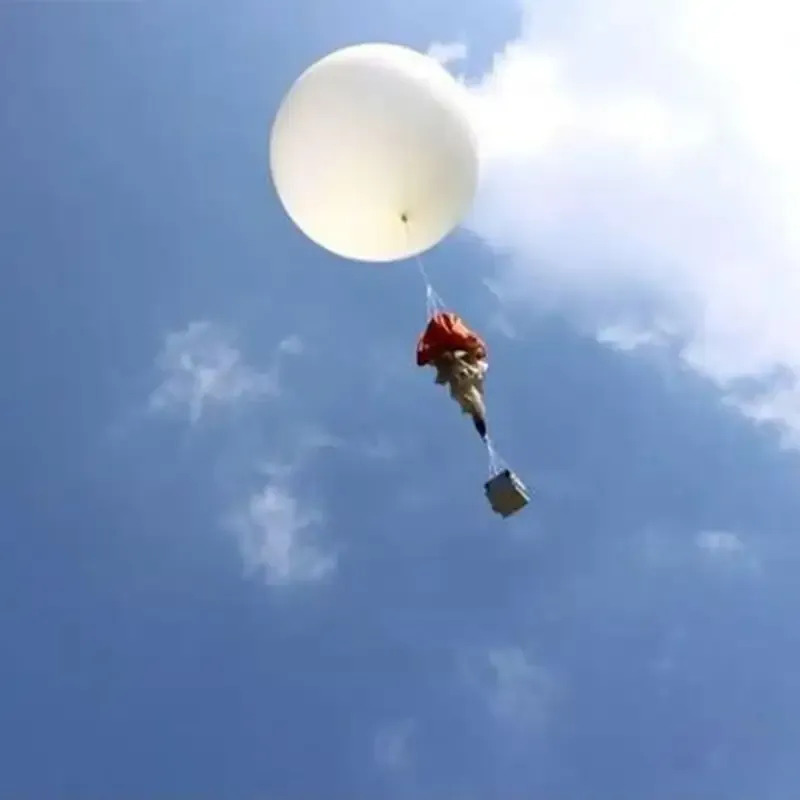
Meteorological balloons, as a vehicle for conventional high-altitude weather detection, require a certain load and inflation rate.Under the premise, the lift-off height should be as high as possible. Therefore, its main characteristics are as follows:
(1) The geometric shape is better. In order to reduce the influence of air resistance and airflow during the ascent of weather balloons (especially sounding balloons), the geometric shape of the balloon is required to be similar to a streamlined shape, and the sounding balloon should not be a perfect circle or an ellipse. For the sounding ball, the handle must be able to withstand a pulling force of 200N without being damaged. In order to reduce the possibility of the handle being torn off, the thickness of the ball should be gradually increased toward the handle.
(2) The ball skin should be even and flat. The place where the thickness suddenly becomes thinner is likely to cause problems. Therefore, the appearance inspection and thickness measurement of weather balloons are particularly important. The balloon must not have uneven thickness, bubbles, impurities, etc. that affect uniform expansion, and no holes, cracks, etc. The appearance of serious defects such as oil stains and long scratches.
(3) The cold resistance is better. The weather balloon has to pass through the high-cold area lower than -80°C during the lift-off process. The inflation performance of the balloon in this area determines the final deployment height of the balloon. The higher the elongation rate of the balloon at low temperature, the larger the expansion ratio. The altitude of the balloon will be higher. Therefore, it is necessary to add a softener in the production of latex balloons so that the balloon skin will not freeze and harden when the balloon encounters low temperatures near the tropopause, so as to increase the elongation and burst diameter of the balloon at low temperatures, thereby increasing the balloon lift-off. height.
(4) Strong resistance to radiation aging and ozone aging. Weather balloons are used when the ozone concentration is high. The ozone concentration reaches the maximum at 20000~28000 meters from the ground. The strong ultraviolet radiation will cause the film to crack, and the long-term exposure to sunlight will also accelerate the film. The balloon expands as the density of the atmosphere decreases during the liftoff process. When it rises to about 30,000 meters, its diameter will expand to 4.08 times the original, the surface area expands to 16 times the original, and the thickness is reduced to less than 0.005mm. , Therefore, the balloon’s resistance to radiation aging And ozone aging resistance is also the main performance of the balloon.
(5) The storage performance is better. From production to use, weather balloons often take 1 to 2 years or even longer. The main performance of the balloons cannot be significantly reduced during this period. Therefore, weather balloons are required to have good storage performance and the residual calcium chloride content on the surface of the balloon. It should be as low as possible to avoid adhesion of the ball skin in wet weather conditions. In tropical areas (or other extreme temperatures), it should generally be able to store for 4 years. Therefore, the balloons should be packaged in a light-proof package to avoid exposure to light (especially sunlight), air or extreme temperatures. To prevent the balloon performance from dropping rapidly.
Post time: Jun-13-2023
